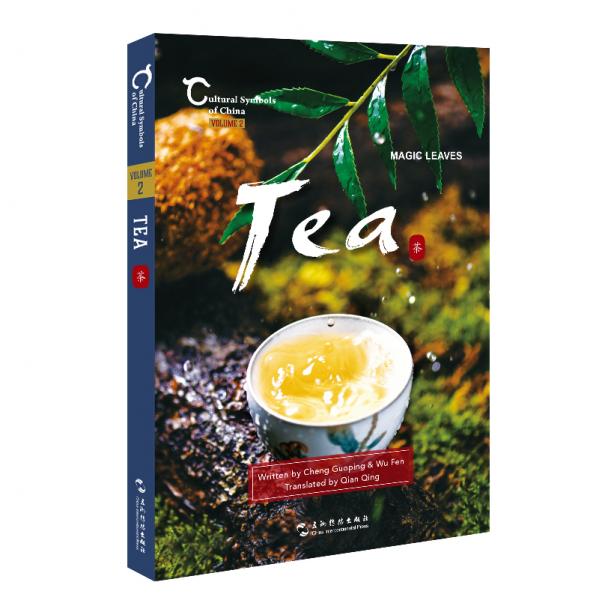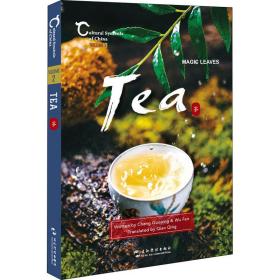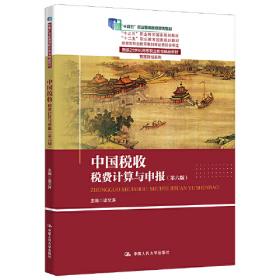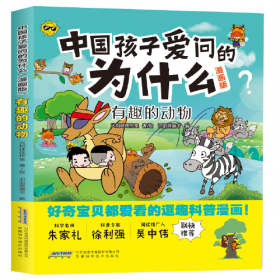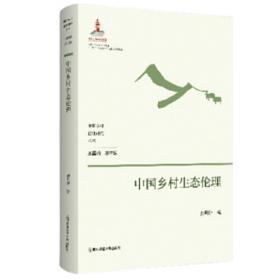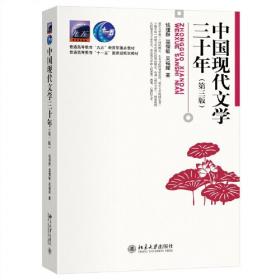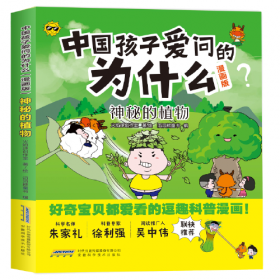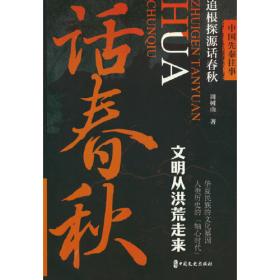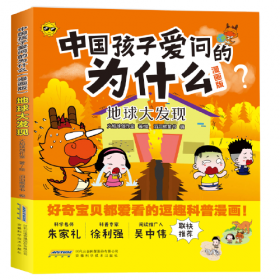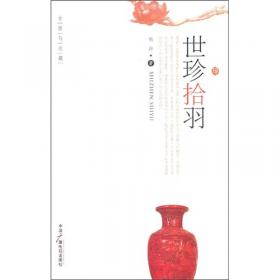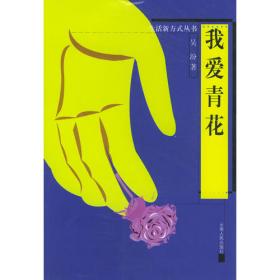中国人文标识系列:中国茶,一片树叶的传奇(英)
出版时间:
2022-01
版次:
1
ISBN:
9787508547268
定价:
128.00
装帧:
平装
开本:
16开
纸张:
纯质纸
页数:
236页
3人买过
-
茶叶,是中华文化的一个符号,一个象征,一道传承,一种味道。浏览中国茶叶5000年的发展史,不谛于在中华文化博大精深的历史长河中徜徉。中国茶叶文化的发展传承保存至今,与中国瓷器、服饰、建筑、园林、美食一样,不仅影响和改变人们的生活习惯和生活态度,也对周边国家和一带一路及沿线国家的生活习惯和生活方式产生了很大影响。
本书以茶叶为脉络,为人们梳理中国茶叶5000年发展历史上的重要节点、重要人物、茶趣茶事、名茶典故,讲述中国茶叶的源远流长,博大精深,以及有关中国茶叶的生活态度和生活美学。
Tea is hailed as a symbol of Chinese culture, a unique heritage, and also a special taste. Like Chinese porcelain, clothing, architecture, gardens and delicacies, Chinese tea is inseparable from the social environment, cultural atmosphere, international exchanges and technological progress prevailing at every specific time. The 5,000-year history of tea also involves many interesting stories related to historical figures and famous tea allusions.
As a China’s business card, tea not only influences Chinese people’s living habits and attitudes, but also has a profound impact on the lifestyle of neighboring countries and those stretching along the Belt and Road network. The pronunciation of the word “tea” in other parts of the world is based on its dialect pronunciation in the north and south of China. 程国平,毕业于浙江大学(原浙农大),乌龙江茶叶总经理。曾任浙大茶学课程讲座教授,武汉市副食品行业职称评委等。学茶研茶传播茶,以身许茶几十年,在省市级广播电视、报刊等媒体发表涉茶文章数十万字。
吴汾,复旦大学新闻系毕业,曾任北京晚报经济部主任和《音乐周报》董事长和总编辑。乐于在游走山水时探寻民俗艺术,走过安徽、浙江、江苏、云南、山东、河南、四川等名茶产地,对茶艺和茶叶略知一二。在北京晚报为程国平、王梅农等茶叶专家开设过专栏。
Cheng Guoping
Graduated from Zhejiang University, general manager of Wulongjiang Tea Fac- tory. He used to be a lecture professor of tea in Zhejiang University and published a large number of articles on tea.
Wu Fen
Graduated from the Journalism Depart- ment of Fudan University, former director of the Economic Department of Beijing Evening News , and the chairman and editor-in-chief of Music Weekly. She has traveled through famous tea produ- cing areas such as Anhui, Zhejiang, Jiangsu, Yunnan, Shandong, Henan and Sichuan, and has hosted the tea column of Beijing Evening News. Preface 01
Chapter I Historical Origin of Chinese Tea
Section 1 Legend of the Origin of Tea 002
Section 2 Tea Plants Native to China 006
Section 3 From Tree Leaves to Tea Leaves 012
Section 4 Classicism of Tea Making in the Tang Dynasty 017
Section 5 Romantic Tea Whisking 022
Section 6 The Emergence of Loose Tea in the Ming Dynasty 029
Section 7 The Popularity of Tea Drinking 033
Section 8 Modern Tea Develops Apace 038
Chapter II Varieties of Chinese Tea
Section 1 iversity of Chinese Tea 044
Section 2 White Tea 048
Section 3 Green Tea 053
Section 4 Yellow Tea 060
Section 5 Dark-Green Tea 064
Section 6 Black Tea 068
Section 7 Dark Tea 072
Section 8 Scented Tea
Chapter III Chinese Tea ‘Walking’
Section 1 Eternal Tea ‘Tone’ Despite Changes 082
Section 2 Longstanding Tea Trade 084
Section 3 Export of Chinese Tea to Japan 088
Section 4 Black Tea Conquers U.K. and then Other Parts of the World 092
Section 5 Process of Tea Globalization 099
Section 6 Chinese Tea that Plays an Important Role in Historical Events 106
Section 7 The Ancient Tea-Horse Trade Road with the Sound of Horse Bells.. 110
Chapter IV Chinese Tea for Enlightenment
Section 1 Charming Chinese Tea Ceremony 120
Section 2 Taste Zen in Tea 133
Section 3 Chinese Tea Ceremony: Tea Soothing 137
Section 4 ‘Once-in -a-Lifetime’ of Japanese Tea Ceremony 140
Chapter V Interesting Chinese Tea Habits
Section 1 Colorful Tea Customs 150
Section 2 Diverse Tea Expertise 170
Section 3 Oriental Beauty Tea C Insects-Bitten Tea Tastes Better 178
Section 4 ‘Duck Excrement Fragrance’ Tea 182
Section 5 The Legendary ‘White Cockscomb’ Tea 184
Section 6 What is 1,000-liang Tea? 188
Section 7 Why a Pu’er Tea Cake Usually Weighs 357 Grams 190
Section 8 What is the ‘DNA’ of Biluochun Tea? 193
Section 9 Why There is No Rock in Wuyi Rock Tea 196
Chapter VI The ‘Firsts’ of Chinese Tea
Section 1 Earliest Tea Plantation in China - Mengding Mountain Imperial Tea Plantation 202
Section 2 First Tea Master in China and the First Tea Book in the World 206
Section 3 China’s First Tributary Teahouse 211
Section 4 Tea Business C One of the Most Ancient Trades in China 213
Appendix
A Brief Chinese Chronology 221
-
内容简介:
茶叶,是中华文化的一个符号,一个象征,一道传承,一种味道。浏览中国茶叶5000年的发展史,不谛于在中华文化博大精深的历史长河中徜徉。中国茶叶文化的发展传承保存至今,与中国瓷器、服饰、建筑、园林、美食一样,不仅影响和改变人们的生活习惯和生活态度,也对周边国家和一带一路及沿线国家的生活习惯和生活方式产生了很大影响。
本书以茶叶为脉络,为人们梳理中国茶叶5000年发展历史上的重要节点、重要人物、茶趣茶事、名茶典故,讲述中国茶叶的源远流长,博大精深,以及有关中国茶叶的生活态度和生活美学。
Tea is hailed as a symbol of Chinese culture, a unique heritage, and also a special taste. Like Chinese porcelain, clothing, architecture, gardens and delicacies, Chinese tea is inseparable from the social environment, cultural atmosphere, international exchanges and technological progress prevailing at every specific time. The 5,000-year history of tea also involves many interesting stories related to historical figures and famous tea allusions.
As a China’s business card, tea not only influences Chinese people’s living habits and attitudes, but also has a profound impact on the lifestyle of neighboring countries and those stretching along the Belt and Road network. The pronunciation of the word “tea” in other parts of the world is based on its dialect pronunciation in the north and south of China.
-
作者简介:
程国平,毕业于浙江大学(原浙农大),乌龙江茶叶总经理。曾任浙大茶学课程讲座教授,武汉市副食品行业职称评委等。学茶研茶传播茶,以身许茶几十年,在省市级广播电视、报刊等媒体发表涉茶文章数十万字。
吴汾,复旦大学新闻系毕业,曾任北京晚报经济部主任和《音乐周报》董事长和总编辑。乐于在游走山水时探寻民俗艺术,走过安徽、浙江、江苏、云南、山东、河南、四川等名茶产地,对茶艺和茶叶略知一二。在北京晚报为程国平、王梅农等茶叶专家开设过专栏。
Cheng Guoping
Graduated from Zhejiang University, general manager of Wulongjiang Tea Fac- tory. He used to be a lecture professor of tea in Zhejiang University and published a large number of articles on tea.
Wu Fen
Graduated from the Journalism Depart- ment of Fudan University, former director of the Economic Department of Beijing Evening News , and the chairman and editor-in-chief of Music Weekly. She has traveled through famous tea produ- cing areas such as Anhui, Zhejiang, Jiangsu, Yunnan, Shandong, Henan and Sichuan, and has hosted the tea column of Beijing Evening News.
-
目录:
Preface 01
Chapter I Historical Origin of Chinese Tea
Section 1 Legend of the Origin of Tea 002
Section 2 Tea Plants Native to China 006
Section 3 From Tree Leaves to Tea Leaves 012
Section 4 Classicism of Tea Making in the Tang Dynasty 017
Section 5 Romantic Tea Whisking 022
Section 6 The Emergence of Loose Tea in the Ming Dynasty 029
Section 7 The Popularity of Tea Drinking 033
Section 8 Modern Tea Develops Apace 038
Chapter II Varieties of Chinese Tea
Section 1 iversity of Chinese Tea 044
Section 2 White Tea 048
Section 3 Green Tea 053
Section 4 Yellow Tea 060
Section 5 Dark-Green Tea 064
Section 6 Black Tea 068
Section 7 Dark Tea 072
Section 8 Scented Tea
Chapter III Chinese Tea ‘Walking’
Section 1 Eternal Tea ‘Tone’ Despite Changes 082
Section 2 Longstanding Tea Trade 084
Section 3 Export of Chinese Tea to Japan 088
Section 4 Black Tea Conquers U.K. and then Other Parts of the World 092
Section 5 Process of Tea Globalization 099
Section 6 Chinese Tea that Plays an Important Role in Historical Events 106
Section 7 The Ancient Tea-Horse Trade Road with the Sound of Horse Bells.. 110
Chapter IV Chinese Tea for Enlightenment
Section 1 Charming Chinese Tea Ceremony 120
Section 2 Taste Zen in Tea 133
Section 3 Chinese Tea Ceremony: Tea Soothing 137
Section 4 ‘Once-in -a-Lifetime’ of Japanese Tea Ceremony 140
Chapter V Interesting Chinese Tea Habits
Section 1 Colorful Tea Customs 150
Section 2 Diverse Tea Expertise 170
Section 3 Oriental Beauty Tea C Insects-Bitten Tea Tastes Better 178
Section 4 ‘Duck Excrement Fragrance’ Tea 182
Section 5 The Legendary ‘White Cockscomb’ Tea 184
Section 6 What is 1,000-liang Tea? 188
Section 7 Why a Pu’er Tea Cake Usually Weighs 357 Grams 190
Section 8 What is the ‘DNA’ of Biluochun Tea? 193
Section 9 Why There is No Rock in Wuyi Rock Tea 196
Chapter VI The ‘Firsts’ of Chinese Tea
Section 1 Earliest Tea Plantation in China - Mengding Mountain Imperial Tea Plantation 202
Section 2 First Tea Master in China and the First Tea Book in the World 206
Section 3 China’s First Tributary Teahouse 211
Section 4 Tea Business C One of the Most Ancient Trades in China 213
Appendix
A Brief Chinese Chronology 221
查看详情
-
全新
上海市闵行区
平均发货15小时
成功完成率94.95%
-
2022年 印刷
全新
北京市朝阳区
平均发货4小时
成功完成率97.69%
-
全新
北京市朝阳区
平均发货5小时
成功完成率98.28%
-
全新
河北省廊坊市
平均发货19小时
成功完成率93.35%
-
全新
河北省廊坊市
平均发货20小时
成功完成率79.95%
-
全新
山东省济宁市
平均发货57小时
成功完成率82.31%
-
全新
北京市丰台区
平均发货15小时
成功完成率85.38%
-
全新
河北省保定市
平均发货28小时
成功完成率90.97%
-
全新
河北省保定市
平均发货25小时
成功完成率88.46%
-
全新
北京市丰台区
平均发货28小时
成功完成率87.03%
-
全新
北京市大兴区
平均发货18小时
成功完成率93.32%
-
全新
河北省保定市
平均发货26小时
成功完成率86.69%
-
全新
江苏省无锡市
平均发货8小时
成功完成率96.57%
-
全新
河北省廊坊市
平均发货19小时
成功完成率93.91%
-
全新
河北省保定市
平均发货33小时
成功完成率87.13%
-
全新
北京市朝阳区
平均发货8小时
成功完成率96.43%
-
全新
北京市房山区
平均发货34小时
成功完成率83.91%
-
全新
天津市东丽区
平均发货19小时
成功完成率91.36%
-
全新
广东省广州市
平均发货15小时
成功完成率91.44%
-
全新
广东省广州市
平均发货16小时
成功完成率92.78%
-
全新
广东省广州市
平均发货16小时
成功完成率92.6%
-
全新
广东省广州市
平均发货17小时
成功完成率91.92%
-
全新
广东省广州市
平均发货18小时
成功完成率93.91%
-
全新
河北省保定市
平均发货20小时
成功完成率88.63%
-
全新
河北省保定市
平均发货25小时
成功完成率88.46%
-
全新
河北省保定市
平均发货29小时
成功完成率80.03%
-
中国人文标识系列:中国茶,一片树叶的传奇(英)
本店所有图书均为正版一手库存书,无笔记,未翻阅。电脑自动采集上传,如果商品名称和图片不符时(注:有很多单本,系统会匹配套装图片,下单请提前咨询)本店以商品名称和书号为准,配货发货只核对书号和商品名称,谢谢
全新
河北省保定市
平均发货6小时
成功完成率86.87%
-
全新
河北省保定市
平均发货5小时
成功完成率87.04%
-
2022年 印刷
全新
北京市朝阳区
平均发货24小时
成功完成率79.38%
-
全新
河北省保定市
平均发货12小时
成功完成率88.81%
-
全新
北京市东城区
平均发货21小时
成功完成率88.17%
-
全新
四川省成都市
平均发货15小时
成功完成率84.28%
-
全新
天津市河东区
平均发货24小时
成功完成率89.19%
-
全新
江苏省无锡市
平均发货20小时
成功完成率90.36%
-
全新
天津市西青区
平均发货14小时
成功完成率90.9%
-
全新
四川省成都市
平均发货15小时
成功完成率84.28%
-
全新
江苏省无锡市
平均发货9小时
成功完成率96.44%
-
全新
江苏省无锡市
平均发货8小时
成功完成率95.02%
-
全新
浙江省嘉兴市
平均发货18小时
成功完成率96.76%
-
中国茶,一片树叶的传奇、
全新正版书籍,假一罚十(图片为标准图,仅供参考。以标题为准,不了解的可以询问客服。) 可开发票
全新
北京市朝阳区
平均发货13小时
成功完成率96.41%
-
中国茶,一片树叶的传奇(
全新正版书籍,假一罚十(图片为标准图,仅供参考。以标题为准,不了解的可以询问客服。) 可开发票
全新
北京市朝阳区
平均发货11小时
成功完成率96.25%
-
全新
河北省保定市
平均发货14小时
成功完成率93.65%
-
全新
北京市海淀区
平均发货9小时
成功完成率97.83%
-
全新
河北省保定市
平均发货24小时
成功完成率90.2%
-
全新
河北省保定市
平均发货27小时
成功完成率91.51%
-
全新
河南省开封市
平均发货18小时
成功完成率86.65%
-
全新
北京市丰台区
平均发货8小时
成功完成率97.9%
-
全新
山东省威海市
平均发货13小时
成功完成率90.07%
-
全新
浙江省嘉兴市
平均发货12小时
成功完成率94.87%
-
全新
湖南省邵阳市
平均发货3小时
成功完成率86.67%

 占位居中
占位居中

